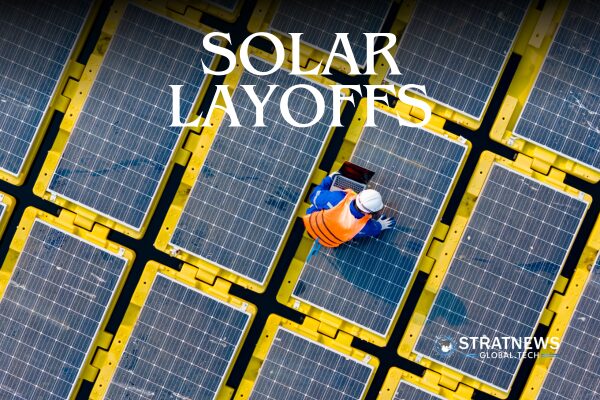China’s Solar Industry Cuts 87,000 Jobs Amid Price Wars and Overcapacity
China’s largest solar companies slashed nearly a third of their workforce last year, according to public filings. The sharp job cuts reveal deep financial strain in one of Beijing’s most prized industries, which is now suffering from falling prices, shrinking demand, and fierce competition.
The cuts, which total around 87,000 jobs, impacted top firms including Longi Green Energy, Trina Solar, Jinko Solar, JA Solar, and Tongwei. A Reuters analysis found these companies reduced staff by an average of 31% in 2023 alone. Most firms did not disclose or confirm layoffs publicly, although Longi admitted to a 5% reduction.
Overcapacity and Price Collapse Hit Hard
China’s solar sector, once a poster child for economic transition away from property-led growth, now faces an oversupply crisis. Global production of solar panels is double the current demand, with Chinese manufacturers dominating the supply chain.
From 2020 to 2023, a wave of new factory investments flooded the market with low-cost panels. This oversupply led to a collapse in prices and brutal price wars, worsened by US tariffs on exports from Chinese-owned factories in Southeast Asia. Analysts estimate the industry lost $60 billion in 2023.
Layoffs are politically sensitive in China, where employment is tied closely to social stability. Although most solar firms have avoided publicly acknowledging job cuts, industry insiders believe many reductions came through layoffs and attrition as firms slashed wages and working hours.
Beijing Signals Intervention to Stabilise Market
Since early 2024, more than 40 solar firms have gone bankrupt, delisted, or been acquired, according to the photovoltaic industry association. Beijing is now preparing to intervene to reduce overcapacity and stabilise pricing.
In July, polysilicon prices jumped nearly 70%, driven by speculation about planned capacity cuts. Solar panel prices also saw a modest rise. Major producers, including GCL, have proposed forming an OPEC-style group to manage supply and pricing. This alliance may also create a 50-billion yuan fund to close down outdated or low-quality production.
President Xi Jinping recently called for an end to “disorderly price competition”, while China’s industry ministry pledged to retire obsolete capacity. Local officials in Anhui province told companies to stop building new plants and shut production lines running below 30% capacity.
Local Resistance Slows Reforms
Despite pressure from Beijing, provincial governments may resist aggressive measures. Many local officials are evaluated based on employment rates and economic output, making them hesitant to shut down large employers in their regions.
Trina Solar’s chairman revealed in June that some new projects had already begun in 2024, despite a freeze announced by China’s top planner, the National Development and Reform Commission (NDRC) in February. Reports suggest any new capacity now requires NDRC’s verbal approval.
Analysts say reducing capacity by 20-30% is essential to restore profitability. Jefferies analyst Alan Lau noted that losses in the solar sector rival those in China’s troubled property market, even though the solar industry is just one-tenth the size.
“This is highly unusual and highly abnormal,” Lau said, highlighting the unprecedented scale of losses across the entire sector.
with inputs from Reuters


